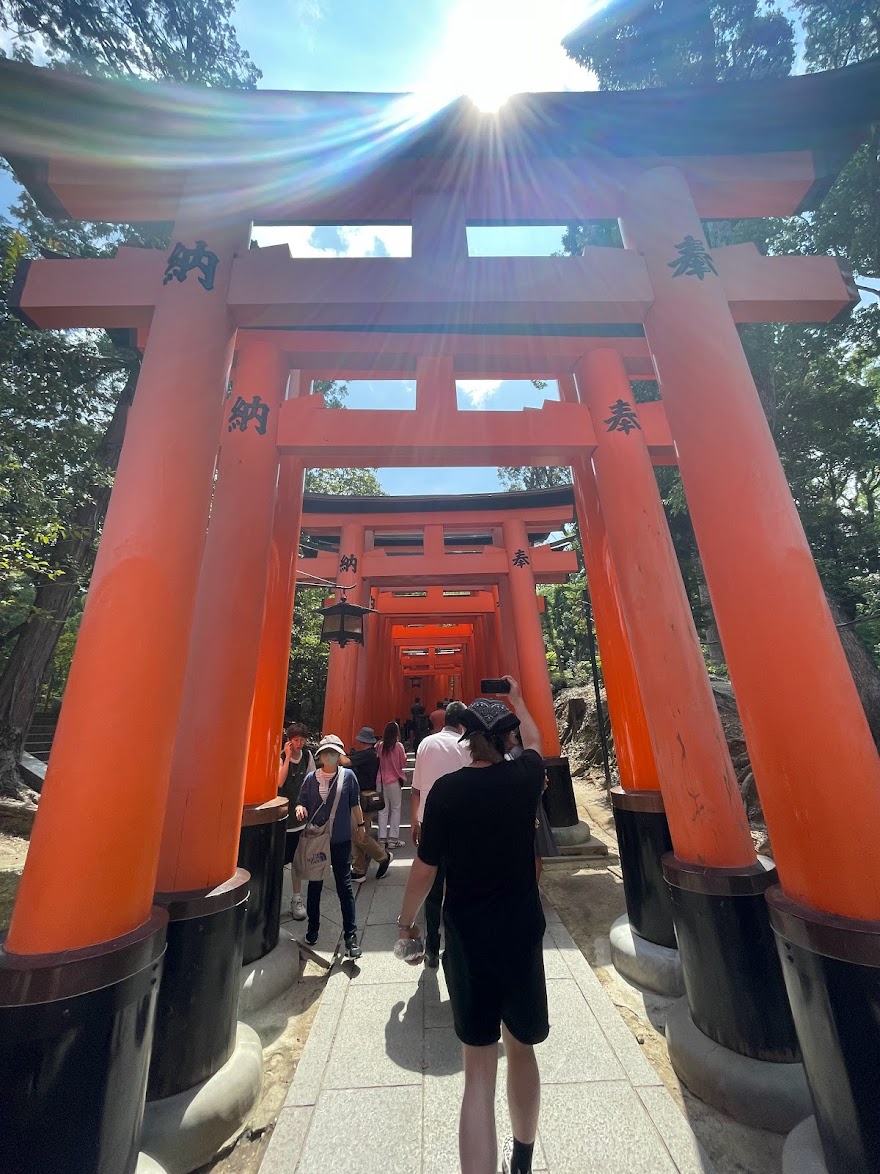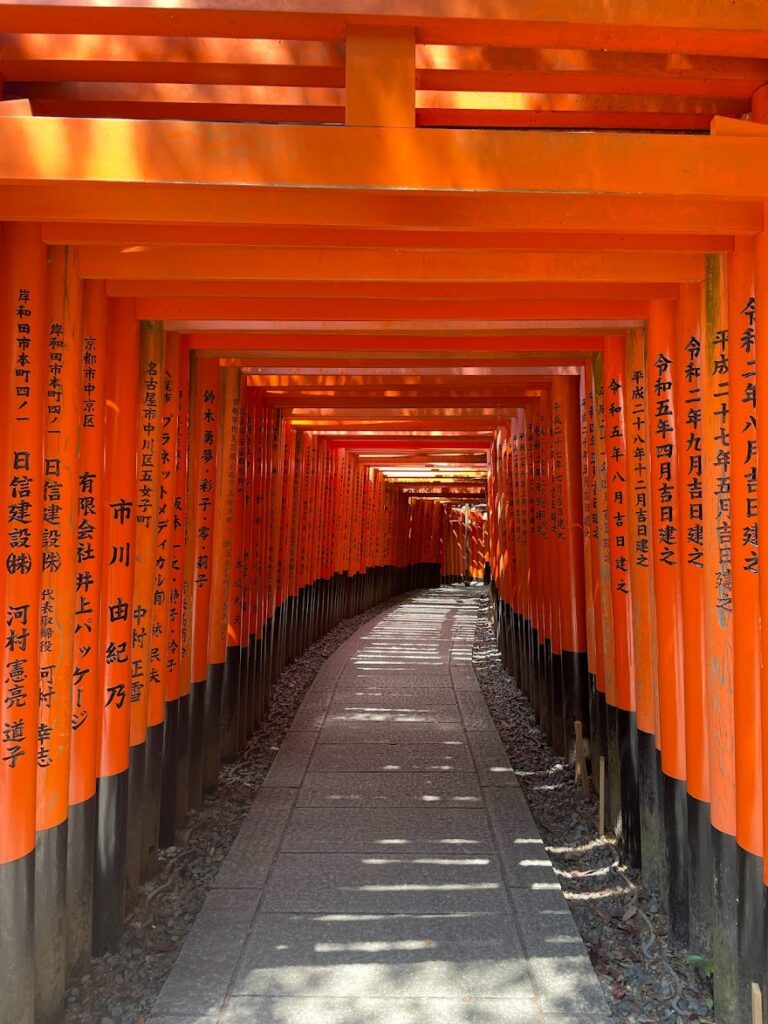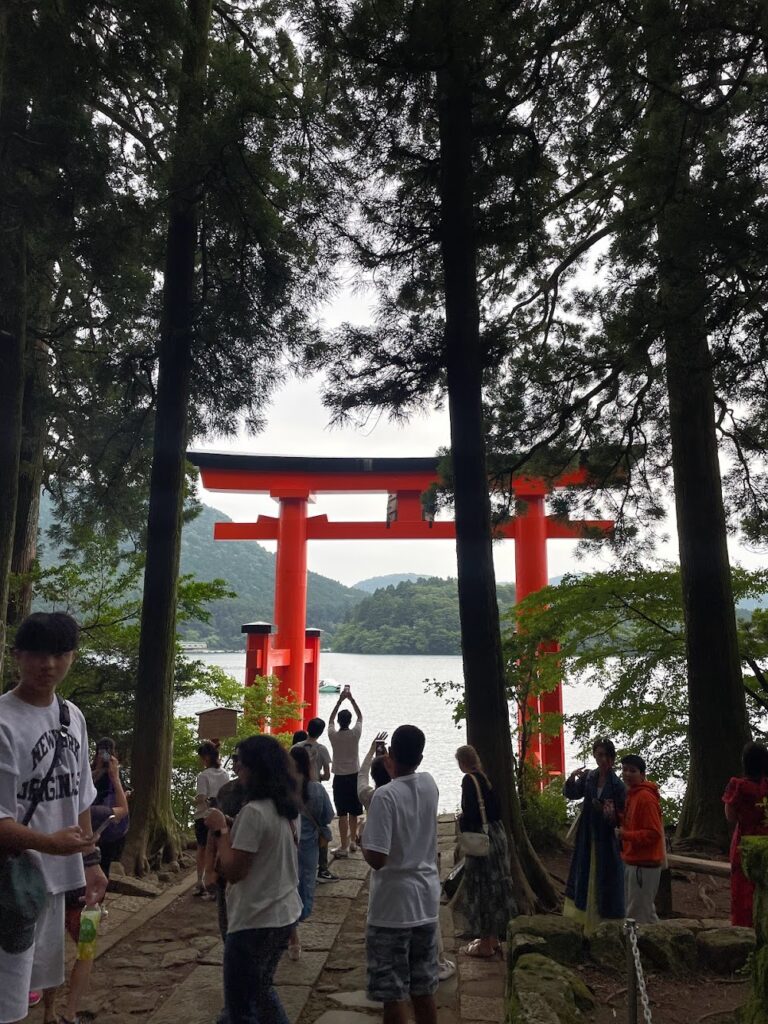
Stepping into the sacred grounds of Japan’s Shinto shrines, visitors are greeted by a mesmerizing sight—vibrant vermilion torii gates that stand tall, forming a pathway between the mundane and the divine.
These striking structures, steeped in history and cultural significance, serve as gateways to sacred spaces and have become iconic symbols of Japan’s spiritual and architectural heritage.
The roots of torii gates can be traced back to ancient Japan, where the indigenous religion of Shinto thrived. Shinto, meaning “the way of the gods,” emphasized the connection between humans and the natural world. Torii gates were erected as entrances to sacred spaces, symbolizing the boundary between the profane and the sacred, and marking the transition from the mundane world to the realm of the deities.
One cannot overlook the vibrant red hue that adorns the majority of torii gates. The color red holds deep symbolic significance in Japanese culture. Red is often associated with vitality, life force, and energy. It is considered an active and dynamic color that represents enthusiasm, passion, and strength while also bringing warmth and vibrancy to one’s surroundings.
Red also carries strong spiritual connotations. It is associated with deities and divine power. The red torii gates mark the transition from the mortal to the spiritual world and are believed to protect the sanctity of the shrine. The color red is believed to have protective qualities warding off evil spirits and bringing good luck and fortune. Along with the protection afforded by the torii, red amulets, talismans and charms are commonly used for protection against negative influences both in shrines and as personal totems.
In traditional Japanese art, red plays a vital role. Red pigments are used in paintings, calligraphy, and woodblock prints to add depth, contrast and emphasis. The bold and vibrant red hues are often seen in traditional kimono fabric, lacquer ware, and ceramics, adding a touch of elegance and symbolism to these art forms.
Overall, the color red holds multifaceted symbolism in Japan, representing vitality, spirituality, protection, celebration and cultural heritage. It is a color deeply woven into the fabric of Japanese traditions and aesthetics, evoking a sense of energy, auspiciousness, and reverence.
Beyond their lively red hue, torii gates hold immense cultural importance in Japan. As visitors traverse the path through the torii gates, they embark on a spiritual journey and pay homage to the deities enshrined within. The torii gates also serve as a visual representation of the respect and reverence the Japanese people have for their spiritual traditions.
In contemporary Japan, torii gates continue to be an integral part of religious ceremonies, festivals and pilgrimages. One of the most famous torii gate locations is the Fushimi Inari Taisha in Kyoto, renowned for its thousands of red torii gates that wind through the sacred Mount Inari. These gates draw visitors from all over the world, providing a unique and awe-inspiring experience of Japanese culture and spirituality.
A fascinating variation of torii gates in Japan can be found in the water. Known as “mizutorii” or “floating torii gate,” these unique structures create a captivating visual spectacle as they seemingly float on the surface of lakes, ponds, or seas. One of the most famous examples of a torii gate in the water is the Itsukushima Shrine’s Floating Torii Gate in Miyajima near Hiroshima.
Itsukushima Shrine, located on the island of Miyajima, is renowned for its stunning Floating Torii Gate, or “otorii.” This grand vermilion gate stands around 16 meters tall and is situated in the Seto Inland Sea. During high tide, the gate appears to be floating on the water, creating an ethereal and almost otherworldly sight.
Torii gates not only connect the earthly realm with the divine but also serve as a bridge between the past and the present. They stand as physical embodiment of Japan’s rich history, preserving the spiritual traditions that have endured for centuries.
As Japan continues to evolve, torii gates remind its people of their cultural heritage and act as a powerful reminder of the importance of preserving and cherishing their traditions. They capture the essence of Japan’s cultural heritage, inviting visitors to immerse themselves in the country’s rich history and spirituality.
Whether encountered in bustling cities or secluded shrines, torii gates stand as timeless symbols of reverence, bridging the gap between the mortal and the divine, and serving as guardians of Japan’s profound cultural legacy.









